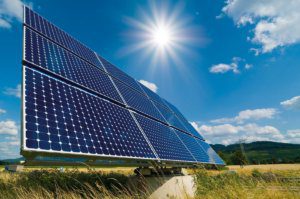
SkyUp airline has received a Third Country Operator (TCO) License, allowing to fly to 28 countries of the European Union (EU), as well as Switzerland, Norway, Iceland and Lichtenstein.
“We are pleased to announce that SkyUp has passed the TCO procedure, having received permission to fly to European countries! Now the sky of Europe is open for us,” the airline said on its official Facebook page.
The TCO license is a single document for compliance with safety standards that allows flights to EU countries. It is issued centrally by the European Aviation Safety Agency (EASA).
The airline announced its readiness to announce new routes to Europe.
As reported, SkyUp airline plans to expand its own fleet by two new medium-haul Boeing 737-700s by the end of 2018, as well as to get one wide-body Airbus A330 into wet leasing.
SkyUp Airline LLC was registered in Kyiv in June 2016. The founder of SkyUp was ACS-Ukraine LLC belonged to Tatiana Alba and Yuriy Alba, who also own JoinUp! tour operator.
The company began charter flights from the end of May 2018.

The Kness Group, a large Engineering, Procurement, Construction (EPC) contractor on the Ukrainian alternative energy market, this year started building own solar power plants and soon intends to launch the capacity of 33 MW, Kness Director General Serhiy Shakalov has said. “To a large extent, we started building our own capacities only this year. Now we are commissioning 33 MW. These are our capacities,” he told Interfax-Ukraine. Shakalov said that the group mainly acts as an EPC contractor in projects, building solar power plants for clients according to different financial models.
He said that Kness has already implemented projects with a total capacity of more than 200 MW. “And now about 200 MW are being built, and the plans are great,” the general director said.
Speaking at the Ukrainian Financial Forum organized by the ICU investment group recently, he pointed out the high interest of investors in solar power plants for the period before the introduction of auctions.
“Why interest? Because the business is clear, simple and fairly well insured: almost a state guarantee in the form of state purchases of electricity. Plus a very low OPEX,” Shakalov said.
According to him, Kness (at that time, Podilsky Energoconsulting) first started building alternative energy facilities, and at the beginning of 2016 it almost completely focused on solar energy and “did not miscalculate.”
Shakalov said that even with the introduction of auctions expected after 2020, the construction of a solar power plant still remains interesting, since there is more money, technology and construction companies on the market than it was before. Among the problems he highlighted a lack of quality facilities and qualified personnel, which does not allow scaling projects.
“We are not afraid of the auction system. We are actively preparing for them (auctions). We are looking positively in 2020,” the general director of Kness said. In his opinion, the introduction of the auction system will create another competitive field in which other financial models will compete, although there is no clear understanding yet. Shakalov also said that it will have to compete more with large international companies, and also more actively develop new regions, since the density of implemented projects in Kherson and Odesa regions is already high.

The opportunities for cooperation in agriculture, construction and energy sectors have been discussed by Ukrainian Prime Minister Volodymyr Groysman with Chinese Ambassador to Ukraine Du Wei. “Ukraine and China plan to double mutual goods flow to $10 billion and are mulling new opportunities or cooperation in agriculture, construction, first of all infrastructure facilities, energy and other areas,” the press service of the Cabinet of Ministers reported after a meeting of the prime minister with the ambassador.
Groysman said that the potential of relations between Ukraine and China is deepening every year, and more and more spheres of mutual interest appear.
At the meeting the Ukrainian prime minster thanked the Chinese diplomat for the successful completion of a project providing ambulances for Ukraine. He expressed hope that China International Import Expo 2018 will be successful. A Ukrainian delegation will take part in the exhibition.

Kyiv Investment Week, a series of business and technological events for investors, business angels, start-ups and entrepreneurs from all over Europe will be held in Kyiv from October 15 to 19, 2018. For five days, the capital of Ukraine will become the main European platform for communication of international and Ukrainian businesses and start-ups. In total, eight events will be attended by about 3,000 participants and 130 speakers from Europe, America and Asia. The objective of Kyiv Investment Week is to represent Ukraine to foreign investors and help participants establish new business contacts and strengthen partnerships.
Kyiv International Economic Forum (KIEF) will become the key event of the week. The fifth anniversary KIEF will be held on October 18-19, 2018 and will bring together world-class economists, famous businessmen, investors and visionaries from more than thirty countries. The leitmotif of the forum will be the future of the countries in the high-tech world. Participants in the KIEF are expected to discuss the strategies and tools of competitiveness, consequences of trade wars, investment attractiveness, as well as the introduction of modern technologies in industry, banking and agrarian spheres, etc.
“During Kyiv Investment Week, several promising business events aimed at increasing the investment attractiveness of Ukraine will be concentrated in Kyiv. This is also one of the main tasks of KIEF. To participate in the forum in Kyiv, numerous delegations of potential investors will arrive to familiarize themselves with the business opportunities of Ukraine. Thus, KIEF and Kyiv Investment Week will really influence the improvement of Ukraine’s reputation in the world,” comments Yuriy Pyvovarov, Head of the KIEF Organizing Committee.
Moreover, the Kyiv Investment Week program includes a one-day business tour for foreign investors around the key points of the Ukrainian start-up ecosystem (October 15, 2018); UNIT Investment Summit in the UNIT.City Innovation Park, which will unite investors, who manage more than $300 million, under one roof (October 16, 2018); the evening of the final presentations of the RadarTech PopCorp FinTech Accelerator (October 17, 2018); Kyiv Barcrowling Week, the week of discounts in the best creative bars and restaurants (October 15-18, 2018); CreativeMornings/Kyiv, the monthly breakfast-lecture for creative professionals (October 19, 2018) and Kyiv Silicon Drinkabout, the Friday’s networking party of the Kyiv high-tech community (October 19, 2018).
Kyiv International Economic Forum (KIEF) is a permanent platform for the formation of Ukraine’s economic development strategy. It is aimed at organizing a dialogue between experts, business and government, adopting the best international experience, creating a roadmap for development and facilitating the conversion of ideas into real actions. www.forumkyiv.org